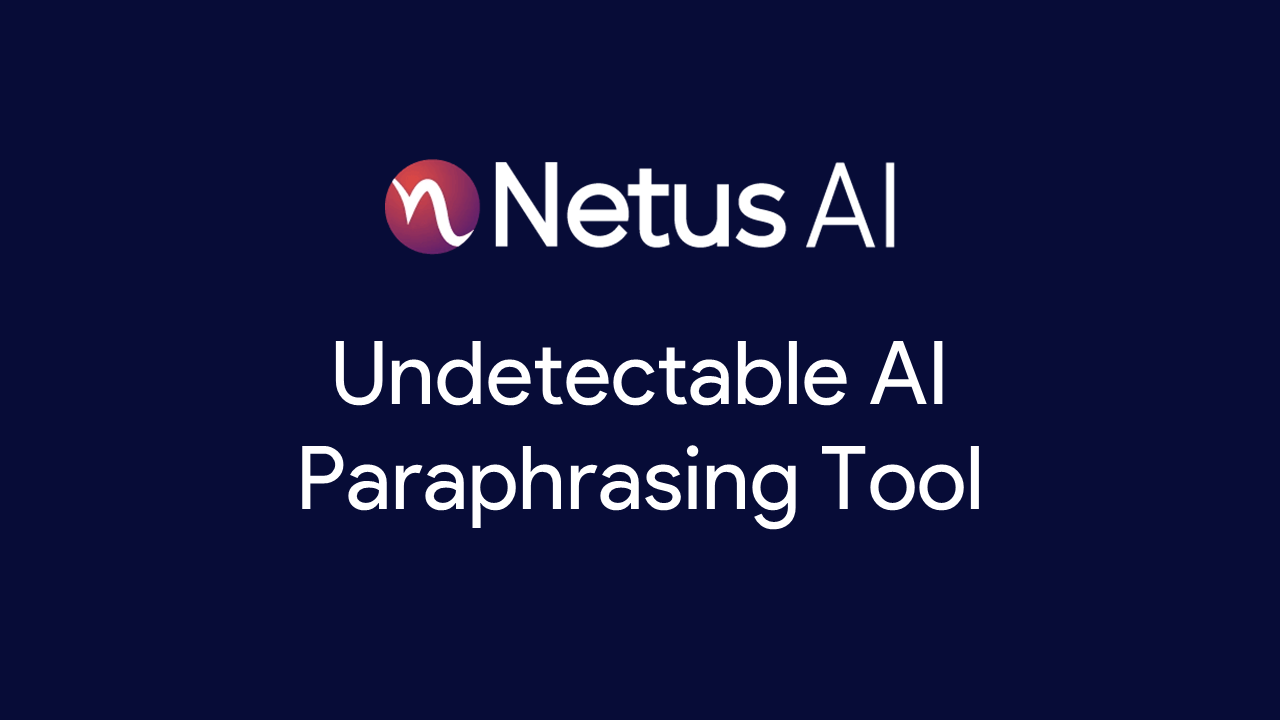NetusAI
NetusAI
Blog Article

Understanding GPTZero: An AI Detection Tool
In the evolving landscape of artificial intelligence, the ability to distinguish between human and AI-generated content has become increasingly critical. NetusAI, a paraphrasing tool, aids content creators by transforming AI-generated content into human-like writing, complete with features for AI detection and avoidance. Among the most discussed tools in this domain is GPTZero, developed by Princeton student Edward Tian. This article delves into the intricacies of GPTZero, examining its strengths, weaknesses, and overall performance.
What Is GPTZero?
GPTZero is an innovative tool designed to identify whether a piece of text was written by an AI or a human. It utilizes two primary metrics: perplexity and burstiness. Perplexity measures how predictable a text is, whereas burstiness evaluates the variability in sentence structure. High perplexity indicates less predictability, often associated with human writing, while consistent sentence patterns with low burstiness are typically indicative of AI-generated text. Understanding what is a good perplexity score GPT Zero offers can help users better interpret the tool’s analysis and improve the accuracy of their content evaluations.
Key Features of GPTZero
Ease of Use
One of the standout aspects of GPTZero is its simplicity. Accessible via a web interface or a Chrome extension, users can easily paste text or upload multiple files for analysis. This user-friendly approach ensures that even those with minimal technical expertise can utilize the tool effectively.
Transparency
GPTZero offers a level of transparency uncommon in many AI detection tools. By highlighting specific phrases likely generated by AI, it provides users with insight into its decision-making process. This feature not only builds trust but also helps users understand the nuances of AI and human writing.
Integration Capabilities
Versatility is another strength of GPTZero. The tool can be integrated into various systems through an API, making it suitable for a wide range of applications. Whether for educational purposes, content creation, or professional use, GPTZero's integration options enhance its utility.
Performance and Limitations
Accuracy Issues
While GPTZero shows promise, it is not without flaws. One significant issue is its rate of false positives, where human-written text is misidentified as AI-generated. This can be particularly problematic in academic or professional settings, where accuracy is paramount. Users relying solely on GPTZero might find these inaccuracies frustrating and potentially damaging.
Limited Customization
Another limitation is the lack of customization. Users cannot adjust detection thresholds to suit their specific needs, which restricts flexibility. For instance, academic users might require stricter detection parameters compared to casual content creators, but GPTZero's one-size-fits-all approach does not accommodate these differences.
Language Limitation
Currently, GPTZero is limited to English text. This language restriction reduces its utility for non-English speakers or those working with multilingual content. Expanding language capabilities could significantly enhance its appeal and usability worldwide.
Future Developments
Despite its current limitations, GPTZero represents a significant step forward in AI detection technology. The tool is still in beta, and developers are actively working to improve its accuracy and add new features. Planned enhancements include plagiarism checks and grammar corrections, which could make GPTZero more comprehensive and reliable.
Comparing GPTZero to Alternatives
While GPTZero is a valuable tool, it is not yet fully reliable for all applications. Users seeking higher accuracy might consider alternatives like Originality.ai, which offers more robust detection capabilities and fewer false positives. However, GPTZero's transparency and ease of use still make it a worthy contender in the AI detection space.
Conclusion
NetusAI's exploration of GPTZero highlights its potential and current limitations. As an AI detection tool, GPTZero offers a user-friendly interface, transparent operations, and versatile integration options. However, issues with accuracy, customization, and language limitations suggest it is best used as a supplementary tool rather than a definitive solution.
For those navigating the complex world of AI-generated content, understanding what is a good perplexity score GPTZero offers and its implications can guide more informed decisions. While GPTZero continues to develop, it remains an important tool for distinguishing between human and AI writing, embodying both the advancements and challenges in this emerging field.
Report this page